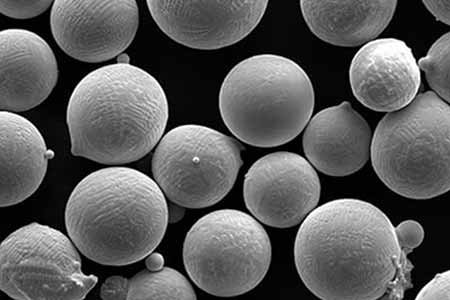Description
Aluminum Powder is a finely ground form of aluminum metal, typically produced through the process of atomization or mechanical grinding. It is characterized by its fine particle size and high reactivity, making it suitable for a wide range of applications across industries such as aerospace, automotive, construction, and pyrotechnics. Aluminum Powder is commonly used as a fuel in solid rocket propellants, as an additive in paints, coatings, and pigments, and in the production of aluminum-based alloys and composites.
Spherical Aluminum Powder, on the other hand, is a specialized form of Aluminum Powder characterized by its spherical particle morphology. It is typically produced through atomization techniques that yield uniformly shaped particles with high sphericity and surface smoothness. Spherical Aluminum Powder offers improved flowability, packing density, and compressibility compared to irregularly shaped powders, making it particularly well-suited for applications such as additive manufacturing (3D printing), metal injection molding (MIM), and thermal spray coatings. Additionally, spherical aluminum powder is utilized in explosive formulations, where its uniform particle size distribution contributes to consistent performance and safety.
Applications of Aluminum Powders
Aluminum Powders, with their versatile properties, find widespread applications across various industries. Some key applications include:
- Pyrotechnics and Explosives: Due to their high reactivity and combustion properties, aluminum powders are utilized in pyrotechnic formulations, fireworks, and explosives to produce bright flashes, sparks, and energetic effects.
- Fuel Additives: Aluminum powders are used as fuel additives in solid rocket propellants, explosives, and energetic materials to increase energy density, combustion efficiency, and thrust in aerospace and defense applications.
- Additive Manufacturing (3D Printing): Aluminum powders are used as feedstock materials in additive manufacturing processes, where they are selectively deposited layer by layer to create complex, lightweight, and high-strength metal parts for aerospace, automotive, and medical applications.
- Thermal Spray Coatings: Aluminum powders are sprayed onto surfaces using thermal spray techniques to create protective coatings with excellent corrosion resistance, thermal insulation, and wear resistance, commonly used in aerospace, power generation, and automotive industries.
- Metallic Pigments and Inks: Aluminum powders are employed as metallic pigments and inks in printing applications, such as packaging, labels, and decorative printing, to impart metallic luster, gloss, and visual appeal.
- Reactive Metal Composites: Aluminum powders are used as reinforcement materials in the production of reactive metal composites, such as aluminum matrix composites (AMCs) and aluminum metal-matrix composites (MMCs), which offer high strength, stiffness, and thermal conductivity for structural and aerospace applications.
- Chemical Reactions and Catalysis: Aluminum powders serve as reactants or catalysts in various chemical reactions, including the production of hydrogen gas in hydrogen fuel cells, organic syntheses, and industrial chemical processes.
- Concrete and Construction Materials: Aluminum powders are added to concrete mixes to produce lightweight concrete with enhanced thermal and acoustic insulation properties, suitable for construction applications in buildings, bridges, and infrastructure projects.
- Paints, Coatings, and Pigments: Aluminum powders are added to paints, coatings, and pigments to enhance their reflective properties, provide metallic finishes, and improve corrosion resistance in architectural, automotive, and marine applications.
These diverse applications highlight the importance of Aluminum Powders in modern manufacturing, construction, and technology industries, contributing to advancements in materials science, engineering, and innovation.
Packaging
Our Aluminum Powder is clearly labeled externally to ensure efficient identification and quality control. We take great care to prevent any damage during storage or transportation.





Reviews
There are no reviews yet.